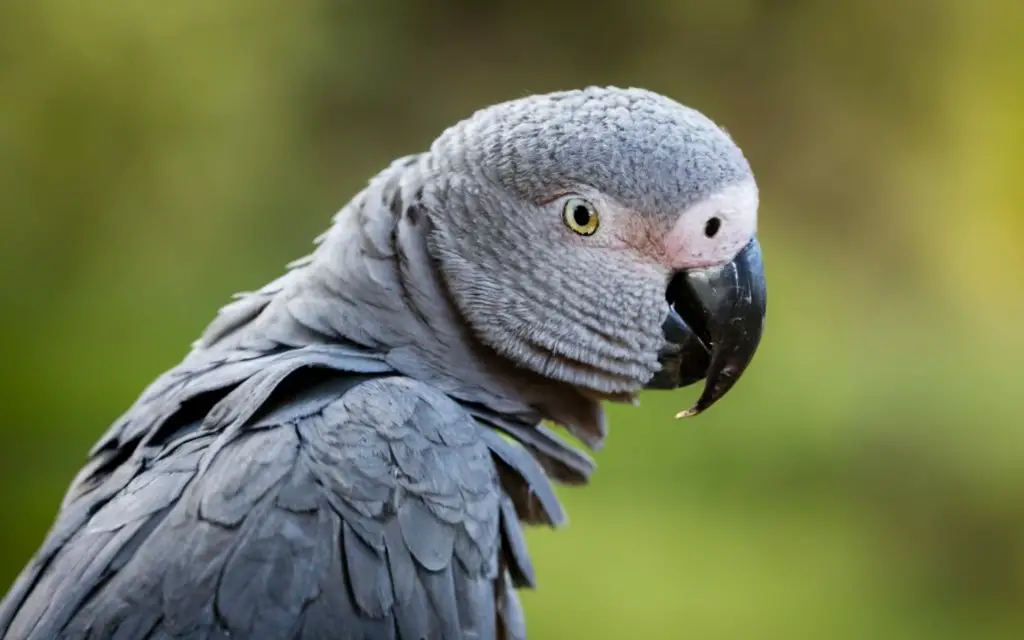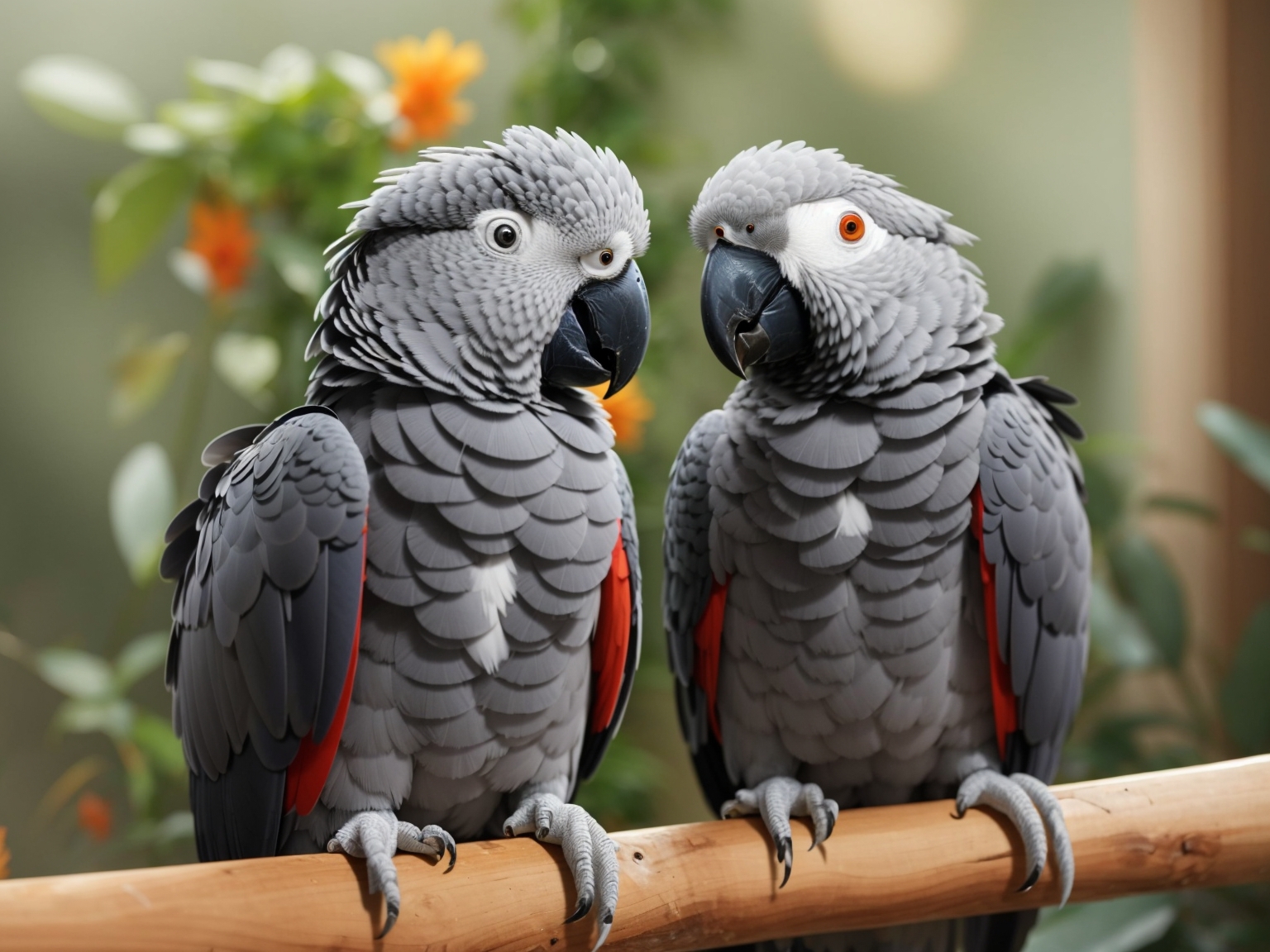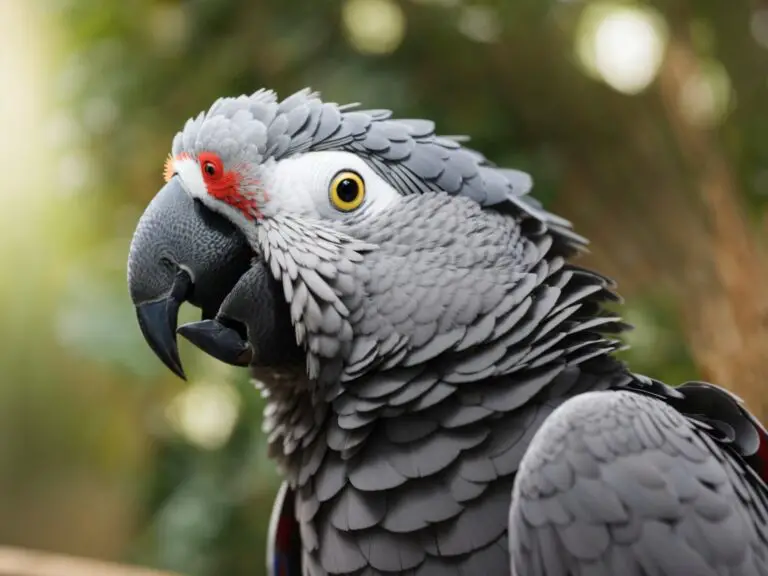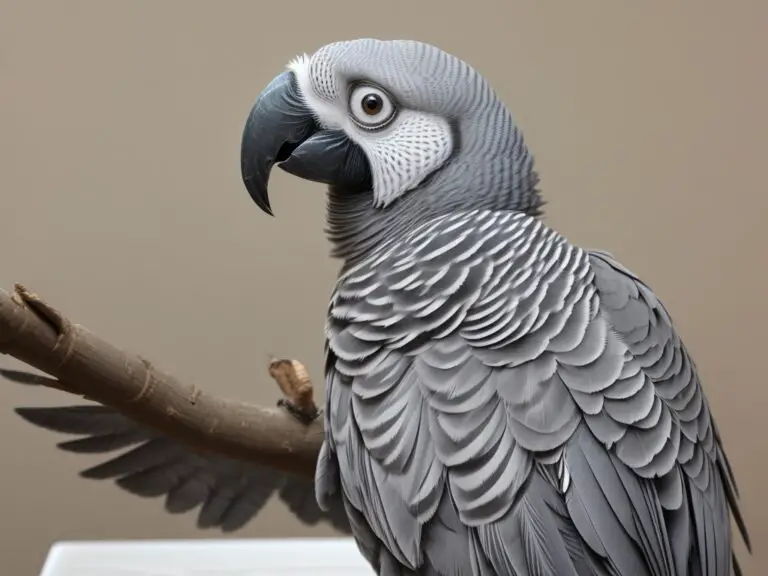Can An African Grey Parrot Bite Your Finger Off?
Key Takeaways:
- Despite their intelligence and powerful beaks, African Grey parrots are unlikely to bite a human finger off.
- African Grey parrots can deliver strong bites, but severe injuries are rare and mostly occur due to mishandling or provoking the bird.
- Proper training, socialization, and understanding the bird’s body language can help prevent aggressive behavior and potential bites.
- Providing a safe and enriched environment with appropriate toys and mental stimulation can reduce the likelihood of African Grey parrots resorting to biting.
Have you ever wondered if an African Grey Parrot could bite your finger off? Well, fret not, my curious friends, because today we’re going to explore the fascinating world of these feathered wonders.
African Grey Parrots are renowned for their intelligence and strong beaks, but can they really deliver a biting force strong enough to sever a finger?
Join me as we dive into the characteristics and behavior of African Grey Parrots, assess their beak strength, and discover how to prevent and treat parrot bites. So, let’s embark on this wild and informative journey together, shall we?
| Question | Answer |
| Topic | Can an African Grey Parrot bite your finger off? |
| Answer | No, an African Grey Parrot cannot bite your finger off. |
| Reason | African Grey Parrots have strong beaks, but they do not have the physical capability to completely sever a finger. |
| Bite Force | An African Grey Parrot’s bite force is estimated to be around 500 pounds per square inch (psi), which is less than that of larger birds like macaws and cockatoos. |
| Behavior | While African Grey Parrots can deliver painful bites, they typically use their beaks for climbing, exploring, and manipulating objects rather than as a weapon. |
Understanding African Grey Parrots
African Grey Parrots are highly intelligent and social birds native to Africa.
They have a reputation for excellent mimicry and can learn to talk and imitate various sounds.
Characteristics of African Grey Parrots
African Grey Parrots are highly intelligent birds known for their exceptional speaking and mimicking abilities.
They have a striking gray plumage with a red tail, and average around 12-14 inches in length.
These parrots have a strong and hooked beak, excellent for cracking tough nuts.
They have a lifespan of around 40-60 years, making them long-term companions.
African Grey Parrots are known for their social nature and their ability to bond deeply with their human caregivers.
They are also very observant and have a high level of cognitive abilities, making them quick learners.
African Grey Parrot Behavior
African Grey Parrots are highly intelligent and social birds.
They are known for their ability to mimic sounds and voices.
These parrots exhibit various behaviors such as talking, singing, whistling, and displaying playful antics.
They thrive on social interaction and require mental stimulation to prevent boredom.
Additionally, they can be territorial and may display aggression if they feel threatened or stressed.
It’s important to provide them with a loving and stimulating environment to maintain their well-being.
Do African Grey Parrots Have Strong Beaks?
African Grey Parrots do indeed have strong beaks.
The Anatomy of an African Grey Parrot’s Beak
The beak of an African Grey Parrot is a powerful and versatile tool.
It is made up of two parts: the upper mandible and the lower mandible.
The upper mandible is curved and pointed, while the lower mandible is slightly shorter.
The beak is covered with a hard layer called the keratin sheath, which protects the sensitive tissues underneath.
The beak also contains sensory cells that help the parrot feel, manipulate, and explore objects.
Additionally, the beak is connected to powerful jaw muscles, allowing the parrot to exert great force when biting or cracking nuts and seeds.
Overall, the anatomy of an African Grey Parrot’s beak is well-adapted for its various functions, including eating, climbing, and vocalizing.
The Strength of an African Grey Parrot’s Beak
African Grey Parrots do have strong beaks. Their beaks are designed to crack open nuts and seeds in the wild, so they have a lot of power behind them.
The beak is made of tough keratin, which is the same material that makes up our fingernails.
This allows them to exert a considerable amount of force when biting or chewing. While they may not bite through a finger, they can certainly cause some pain and potentially draw blood if they bite down hard enough.
It’s important to handle them gently and respect their beak strength to avoid getting bitten.
Can African Grey Parrots Bite Your Finger Off?
While it’s unlikely for an African Grey Parrot to bite your finger off, their powerful beaks can still cause painful bites.
Assessing the Bite Force of African Grey Parrots
Assessing the bite force of African Grey Parrots is important to understand the potential harm their bites can cause.
Factors such as the strength of their beaks and their size contribute to the severity of a parrot bite.
Additionally, observing their body language can provide clues about their mood and potential for biting.
By assessing these factors, you can better gauge the risk of a parrot bite and take necessary precautions to minimize it.

Factors That Determine the Severity of a Parrot Bite
The severity of a parrot bite can be influenced by several factors, including the size and strength of the bird’s beak, the level of aggression or fear the bird is experiencing, and the duration and force with which the bird bites. Additionally, the location of the bite on the body can also impact the severity.
Understanding these factors can help you minimize the risk of getting bitten and handle any bites effectively.
How to Minimize the Risk of Getting Bitten
To minimize the risk of getting bitten by an African Grey Parrot, it’s important to establish trust and build a bond with your parrot. Provide proper training and socialization, and always be aware of your parrot’s body language to prevent any potential aggression.
How to Prevent Parrot Bites
Preventing parrot bites involves building trust, providing training, and understanding body language.
Establishing Trust and Building a Bond with Your African Grey Parrot
To establish trust and build a bond with your African Grey Parrot, it’s important to spend quality time together and show them love and affection.
Talk to them in a calm and soothing voice, offer treats as positive reinforcement, and provide them with a safe and comfortable environment.
Patience and consistency are key in gaining their trust and strengthening your relationship.

Providing Proper Training and Socialization
To provide proper training and socialization for your African Grey Parrot, it’s important to start early and be consistent. Here are a few key points to consider:
- Positive reinforcement: Use rewards and treats to encourage desired behavior, such as stepping onto your hand or speaking on command. Avoid punishment-based training methods.
- Socialization: Expose your parrot to different people, animals, and environments to help them become comfortable and confident in various situations. Gradually introduce new experiences to prevent overwhelming them.
- Daily interaction: Spend quality time with your parrot each day, engaging in activities like talking, playing, and training. This will strengthen the bond between you and help your parrot feel secure.
- Enrichment: Provide a stimulating environment with plenty of toys, perches, and activities to keep your parrot mentally and physically active. Rotate toys regularly to prevent boredom.
- Consistency: Use consistent commands, routines, and expectations to help your parrot understand what is expected of them. Be patient and understanding, as training and socialization take time and effort.
Remember, every parrot is unique, so it’s important to tailor your training and socialization approach to your individual bird’s needs. With patience, consistency, and positive reinforcement, you can help your African Grey Parrot become a well-adjusted and happy companion.
Recognizing and Responding to Your Parrot’s Body Language
Understanding and responding to your parrot’s body language is essential for maintaining a harmonious relationship. Here are some key signs to look out for:
- Feather position: Fluffed feathers may indicate illness or discomfort. Smooth, sleek feathers show contentment.
- Eye contact: Direct eye contact can be a sign of trust and affection. Dilated or narrowed pupils might suggest excitement or irritation, respectively.
- Beak movements: A relaxed beak indicates calmness. Clacking or rapidly opening and closing beak may be a warning sign of aggression.
- Body posture: A hunched or lowered posture may imply fear or submission. Upright stance signifies confidence and a desire for interaction.
- Vocalizations: Squawking, shrieking, or repeated vocalizations could indicate distress or a need for attention. Soft chattering or mimicking sounds are usually signs of contentment.
When responding to your parrot’s body language:
- Stay calm and avoid sudden movements.
- Give them space if they seem stressed or aggressive.
- Offer reassurance through gentle words and a soothing tone.
- Provide positive reinforcement for desired behaviors, such as praise or treats.
- Seek professional advice if you’re unable to interpret or address your parrot’s body language effectively.
Remember, every parrot is unique, so take the time to observe and understand your parrot’s individual body language cues. It’s a key component in building a strong and loving bond with your feathered friend.
What to Do If a Parrot Bites Your Finger
If a parrot bites your finger, there are immediate steps you should take to ensure your safety and minimize any further harm.
Immediate Steps After Getting Bitten
If you find yourself bitten by an African Grey Parrot, it’s important to take immediate steps to care for your injury. Here’s what you should do:
- Stay calm: It’s natural to feel startled or upset after being bitten, but try to remain calm. Panicking can make the situation worse.
- Assess the severity: Determine the severity of the bite. Minor bites may only result in superficial wounds, while more serious bites may require medical attention.
- Clean the wound: If the bite breaks the skin, wash the wound with mild soap and warm water to prevent infection. Pat it dry with a clean cloth.
- Apply first aid: If the bite is bleeding, apply gentle pressure with a clean cloth or bandage to stop the bleeding. Use an antiseptic cream or ointment to help prevent infection.
- Monitor for signs of infection: Keep an eye on the wound for any signs of infection, such as increased redness, swelling, or pus. If infection occurs, seek medical help.
- Seek professional advice: If the bite is severe, causing excessive bleeding or damage, or if you’re concerned about infection, it’s best to consult a healthcare professional.
Remember, while parrot bites can be painful, they are usually not life-threatening. By taking these immediate steps, you can help ensure proper care for your injury and minimize the risk of complications.
Treating Minor Injuries
Treating minor injuries caused by parrot bites involves cleaning the wound with mild soap and water, applying an antiseptic ointment, and covering it with a sterile dressing. It’s important to monitor the wound for signs of infection, such as redness, swelling, or pus.
If any of these symptoms occur, seek medical attention promptly.

Frequently Asked Questions about African Grey Parrot Bites
How often do African Grey Parrots bite?
African Grey Parrots have the potential to bite, but the frequency of biting can vary from bird to bird.
Some African Grey Parrots may rarely bite, while others may bite more frequently.
It’s important to understand that biting is a natural behavior for parrots and can occur in response to various stimuli such as fear, stress, or territoriality.
By understanding their behavior and providing proper training and socialization, you can minimize the risk of being bitten.

Can parrot bites cause infections?
Yes, parrot bites can potentially cause infections.
Parrots, including African Grey Parrots, have sharp beaks that can break the skin, introducing bacteria into the wound.
It’s important to clean the bite immediately and seek medical attention if the wound shows signs of infection, such as redness, swelling, or discharge.

Can parrot bites cause permanent damage?
Yes, parrot bites can cause permanent damage.
Their beaks are strong and sharp, capable of breaking skin, causing bleeding, and even fracturing bones.
In severe cases, nerve damage and loss of feeling in the affected area can occur.
It’s important to take precautions and seek medical attention if necessary.
Final Verdict
African Grey Parrots have strong beaks but it is highly unlikely for them to bite your finger off.
While they can deliver a painful bite, the severity depends on various factors such as their size, mood, and level of trust with their owner.
By understanding their behavior, providing proper training and socialization, and recognizing their body language, you can minimize the risk of getting bitten.
In the event of a bite, immediate steps such as cleaning the wound and seeking medical help for serious bites are crucial.
Remember, building a strong bond and trust with your parrot is key to preventing bites and fostering a harmonious relationship.







